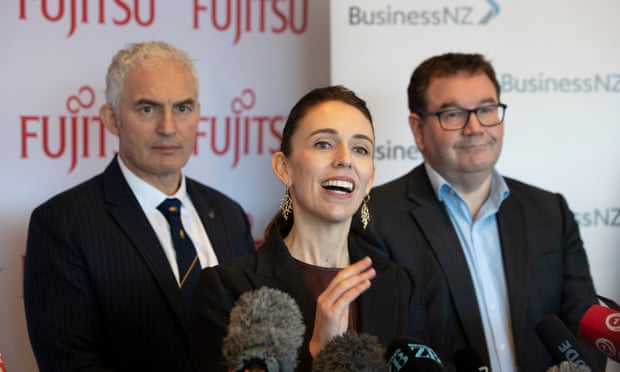New Zealand to cut ‘low-skill’ immigration and refocus on wealthy
New Zealand has become an increasingly appealing destination for those seeking a haven – from Covid-19, economic recession or chaotic international politics. In recent years, the country gained a reputation for “billionaires’ boltholes”, as mega-rich speculators including Peter Thiel bought up remote properties in scenic, isolated regions.
But in a post-Covid world, the emigration dream will be less accessible – at least for those who don’t fall into the mega-rich category. On Monday, the New Zealand government announced it would be narrowing pathways for those hoping to migrate and work in the country, particularly those it classed as “low-skill” and low-wage workers. It simultaneously announced new measures to attract rich investors.
“When our borders fully open again, we can’t afford to simply turn on the tap to the previous immigration settings,” the tourism minister, Stuart Nash, said in a speech on Monday evening, which signalled sweeping changes ahead for immigration.
“Covid-19 has starkly highlighted our reliance on migrant labour – particularly temporary migrant labour. The pressure we have seen on housing and infrastructure in recent years means we need to get ahead of population growth,” he said.
High levels of migration have contributed to 30% of New Zealand’s total population growth since the early 1990s, Nash said. New Zealand’s dependency on temporary workers – the highest in the OECD – “means businesses have been able to rely on lower-skilled labour and suppress wages rather than investing capital in productivity-enhancing plant and machinery, or employing and upskilling New Zealanders into work”, he said.
Initial changes would be focused on the temporary and skilled migrant worker immigration categories. The minister’s speech was light on the precise details of how those visa categories would be changed, but he said the government would “strengthen both the minimum employer requirements and labour market test to be met before a migrant can be hired”.
The government would “encourage employers to hire, train and upskill more New Zealanders to fill skill shortages”, Nash said.
The proposals are part of a wider suite of changes to immigration in New Zealand. The government also announced new strategies to target wealthy investors. Nash said these would allow more than 200 wealthy international investors to come to New Zealand over the next 12 months.
In a pre-budget speech to business leaders on Thursday, the prime minister, Jacinda Ardern, had flagged changes ahead. “Let me be clear. The government is looking to shift the balance away from low-skilled work, towards attracting high-skilled migrants and addressing genuine skills shortages,” she said.
On Monday, Ardern said the government was using Covid-19 as an opportunity to reconsider areas such as immigration. She would not be drawn on how many people would be affected by the changes, saying it was about outcomes for New Zealand, not “crude numbers”. The Labour government’s immigration policy after initially being elected to power in 2017 was to reduce net migration by about a third – cutting 20,000 to 30,000 migrants from the then total of about 73,000.

